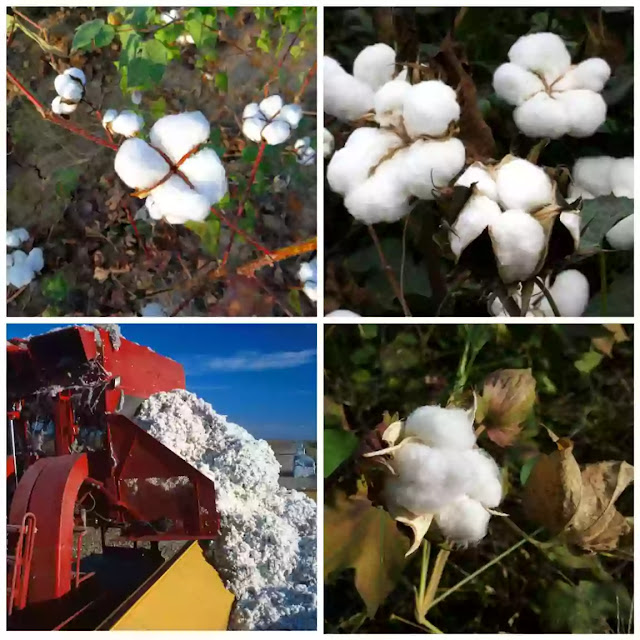Cotton is a non-food cash crop and profitable too. It is one of the most used raw materials for daily uses since a couple of thousands of years ago. People used it to make their clothes, winter cushions, mattress, and making filters for various reasons.
Let's understand the cotton farming, basic requirements to grow, harvest, and return rate of the cotton crop.
Cotton farming and production cost
Cotton is a Kharif season crop that doesn't need too much rain or too dry weather to grow. Cotton plants produce fiber and seeds both. The fiber is use for cloth making and seeds use to extract cotton oil.
It is not possible to grow cotton everywhere in the world. We need a proper requirement system to grow cotton. Following are some of the basic requirements and management of the cotton crop.
Cotton farming requirements
Following are the basic requirements to grow cotton plants-
- Soil type and pH
Although the popular soil for cotton farming is black cotton soil but sometimes alluvial and red sandy soil is use for cotton farming with proper fertilizer management.
The range of soil pH for cotton farming should be between 5.9 to 7.8.
- Temperature and humidity
During the sowing of cotton seeds, the temperature should be moderate for cotton cultivation. For mid-growth, the temperature can decrease to 18 degrees Celcius. At the time of harvesting, the temperature should be dry and range between 30 to 34 degrees Celcius.
Similarly, humidity should start increasing with the sowing process. For mid-growth, humidity can increase up to 50%. For a later period, it should decrease and become very low about 10%.
- Irrigation and rainfall
The cotton farmers should aware of rainfall and irrigation of cotton plants. Cotton plants don't ask for too much rain or too much dry weather. Initially, cotton plants grow in moderate rainfall and don't need extra irrigation water. But once rainfall stopped, plants require irrigation water in case of least moisture in the soil.
You should be aware that don't too much irrigate plants during flower blooming and just before harvesting cotton fiber and seeds.
- Fertilizers
Although if your soil health is naturally good then you can grow cotton plants easily with organic compost. But if soil health is odd and pH is disturbed then you need proper treatment of soil by required components and fertilizers. Normally, people face the issue of lack of NPK or DAP. To solve this problem, people use NPK in the ratio of 2:1:1 and DAP according to need.
Cotton yield per hectare in a season
- Number of plants per hectare- 9,000 plants
- Cotton yield per plant- 250 grams to 400 grams
- The line to line distance- 4 feet
- Plant to plant distance- 3 feet
Total cotton yield from one hectare- 35 quintals(estimated)
Cotton plant stages
Following are the stages of the cotton plant to become cotton fiber-
- The first stage- sprouting and small plants
in the first stage of cotton farming, plants start to sprout from the seeds. Within the next 2 to 3 weeks, sprouts become small plants. These plants start to make new leaves.
- Second stage- cotton bolls
In the second stage after 5 weeks, cotton plants start to produce buds called square cotton bolls. These square balls are the first stage of becoming cotton fiber from the buds. One single cotton plant can produce 4 to 6 cotton bolls.
- Third stage- Flower blooming
After 8 to 10 weeks, these buds start to convert into pink flowers. These flowers bloom for a period and then fall. It is not certain that all the flowers on the same plant will fall own together. But it is certain that after falling, each flower gives space to pop out the cotton fiber.
- Fouth stage- Cotton fiber
In the final stage, after 15 weeks, white cotton bolls start to pop out till they get mature. These white cotton are fiber and become mature in the next 5 weeks. So overall, it takes 140 days to 160 days to harvest cotton fiber from the day of sowing seeds.
In most cases, cotton fibers don't become mature at the same time. So, we harvest mature fibers two to three times from the same plant till all the fibers become mature.
Season of growing cotton
Although Cotton farming is a Kharif season crop its growing season is different according to the climate conditions.
Mostly, cotton cultivation starts from March to May in the Southern-Western part of India. It is harvested from June to July.
In some regions, cotton harvest in November-December.
Cotton farming investment per hectare
- Cotton seeds cost- 1,000 INR
- Irrigation water cost- 10,000 INR(in absence of rain)
- Fertilizers cost- 14,000 INR
- Labor cost- 25,000 INR
- Transportation cost- 2,000 INR
- Marketing cost- 1,000 INR
Total cost- 53,000 INR
Cotton farming profit per hectare
- Price of 1 kg raw cotton in the market- 60 INR
- Total yield weight- 35 Quintals
- The total price of cotton yield per hectare- 2,10,000 INR
The total profit margin on cotton yield in one hectare- 1,57,000 INR

